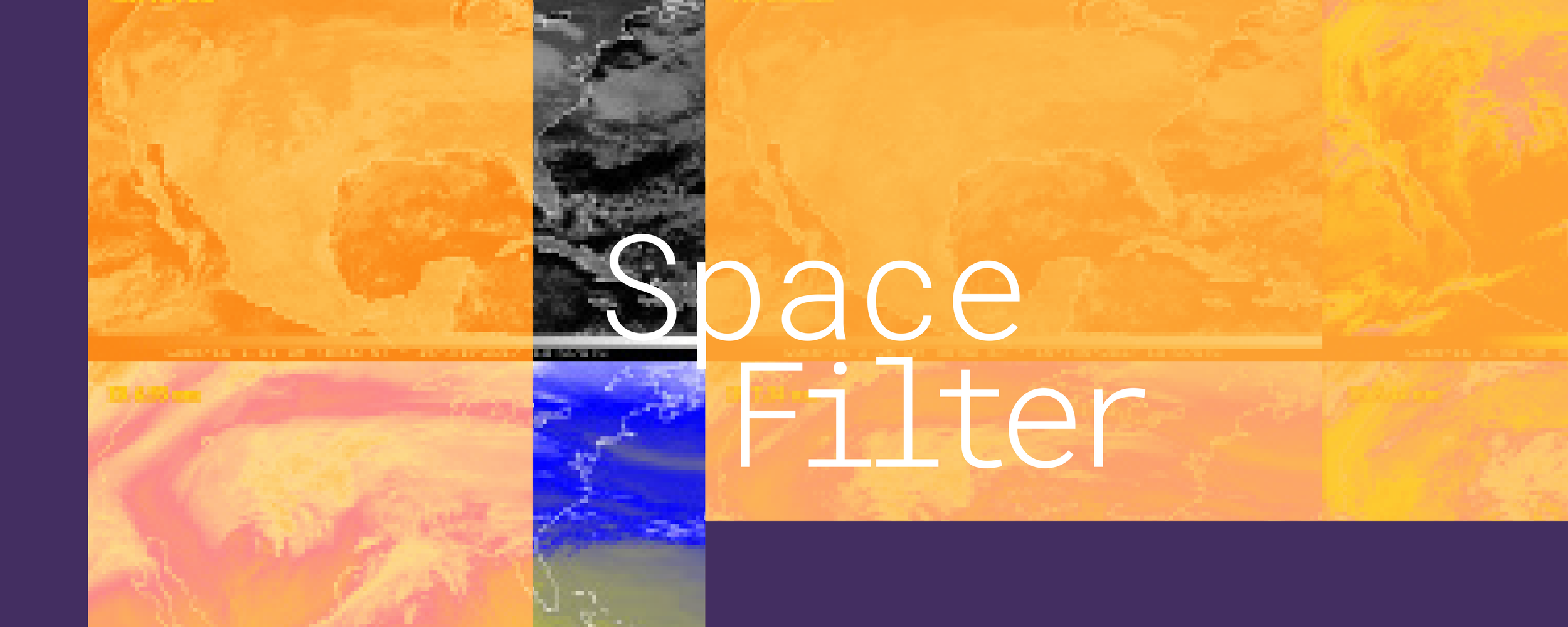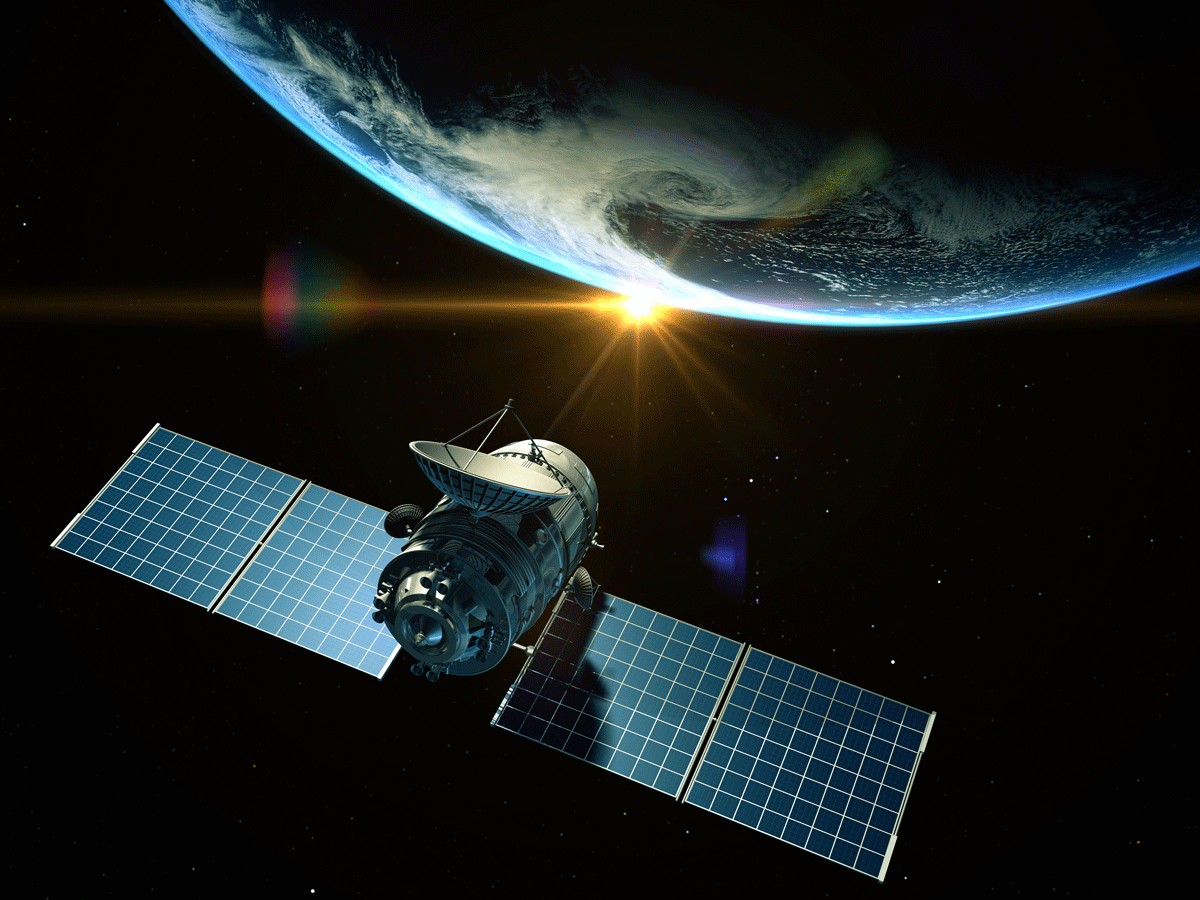
Space Filter
Development of Smart Satellite Aims to Tame the Data Dump
Niki Kapsembalis
Imagine riding a train across the United States, recording everything you see from the window in precise detail. Every few hours, the train stops for five minutes, and you have only that amount of time to share what you’ve captured with a person waiting at the station before the train takes off again.
Now imagine circling Earth, collecting even more information, but you still only have the same five minutes to share it — and no way to sort through what’s relevant. How useful is the data likely to be?
That is the conundrum faced by a wide swath of government entities and private corporations using satellites to collect images. Thousands of satellites orbit Earth, according to the United Nations’ Outer Space Objects Index. Not all are active, but those that are take high resolution video 24 hours a day, seven days a week.
Currently, they downlink those giant volumes of raw data to ground stations on Earth every few hours, dumping whatever information they can in a five-minute span.
“That creates this huge bottleneck,” explained Zac Manchester, assistant professor at the Robotics Institute.
A decade’s worth of investment in infrastructure has resulted in better radios and more ground stations, but little headway has been made to address the bottleneck, because new satellites are launched too frequently to allow the infrastructure to catch up to them.
“It’s kind of a losing game,” said Manchester. “You can do incrementally better, but even after a decade’s worth of investment, you’ve probably only got a 10% improvement. It’s a tough, expensive thing to do.”

Smart Satellite Research Team
Headquartered in the Department of Electrical and Computer Engineering (ECE), satellite research is a collaborative effort involving faculty with expertise in design, wireless communications, networking, security and AI.
The research is funded by a five-year, $7 million grant from the National Science Foundation. Team leaders include:
Brandon Lucia (principal investigator), Sathaye Family Foundation Career Development Professor of Electrical and Computer Engineering
Gauri Joshi, associate professor, Electrical and Computer Engineering
Swarun Kumar, associate professor, Electrical and Computer Engineering
Zac Manchester, assistant professor, the Robotics Institute
Vyas Sekar, Tan Family Professor of Electrical and Computer Engineering
The group has collaborated on several space launches prior to winning NSF funding. During the five-year cycle of that grant, they hope to create enough basic research, including additional launches, to enable future nanosatellite projects.
“We are the only NSF center that’s working on this topic, and we’re a unique effort, because we have a really diverse team,” Lucia said.
Counting Down to Launch
Manchester’s lab works on guidance navigation and control, or GNC in aerospace parlance. The project plans to launch a baseball-sized satellite known as PocketQube in April 2023 to test algorithms developed by the team to adjust its attitude, or orientation, in space.
“If we pull it off, it will be the smallest spacecraft ever with full attitude control,” said Manchester.
PocketQube: small, less expensive and smarter swarm satellites that communicate with one another for navigation
Currently, to point the satellite in the direction it needs to travel, someone on the ground needs to control it. One method uses a motor, which can be heavy and difficult to scale to smaller satellites. In addition, motors can wear out. As an alternative, Manchester’s lab has developed algorithms that navigate using electromagnetic coils in the solar panels on the satellite’s face, which push on the Earth’s magnetic field — similar to the way a compass needle works.
Though the underlying concept has been well established, the new algorithms are designed to be more accurate in pointing the satellite in the desired direction: “You basically use the Earth as the other half of your motor,” Manchester explained.
If successful, PocketQube could provide a significant advantage in developing low cost, highly functional small satellites that could deploy in swarms. Drawing on inspiration from schooling fish or flocking birds, satellite swarms eventually will talk to each other with radio signals, figuring out how to get to where they need to go, Manchester said. Swarms offer better distribution and lower costs than larger satellites, and losing one is less problematic than losing a single large satellite. The launch is part of the center’s five-year plan to conduct basic research and space launches to enable future missions, said Lucia.
Ultimately, these swarm satellites could identify signs of a wildfire before it rages out of control, allowing local firefighters to respond more quickly. Monitoring wide swaths of ocean would also allow for faster searches of plane or boat wreckages.
“Our vision is a minute turnaround time,” said Lucia.
“If we pull it off, it will be the smallest spacecraft ever with full attitude control.”
END PARAGRAPH
Through a partnership with Universidade do Minho and Instituto Superior Técnico in Portugal, Manchester is also using PocketQubes to collaborate on a project designed to widen access to space exploration. Known as Prometheus, its goal is to provide a complete open-source satellite — including hardware designs, software and control algorithms — that can be built by students for under $1,000. The partnership will steer the Prometheus project from development through licensure, certification and launch, giving students hands-on learning through each step of that process.
Jacob Willis, a second-year doctoral student in the Robotics Institute, oversees a team of four undergraduates, two master’s degree candidates and another doctoral student in Manchester’s lab. He stressed the importance of their collaboration in getting Prometheus and other satellites into space.
“The students I’m working with are fantastic. This project, and really any spacecraft development project, is a team effort,” he said. Lucia agreed, noting the influence that different disciplines within Carnegie Mellon have on each other: “All our efforts are amplified by others across departments,” Lucia said.
For Willis, who began working on satellites as an undergraduate, the unsolved problems of spacecraft control are particularly intriguing.
“I think humanity’s endeavor into space is one of the greatest journeys of mankind, and it’s exciting to be on that journey,” he said. “We’re breaking off the surface of the Earth and exploring new domains.” ■

“I think humanity’s endeavor into space is one of the greatest journeys of mankind, and it’s exciting to be on that journey. We’re breaking off the surface of the Earth and exploring new domains.”









